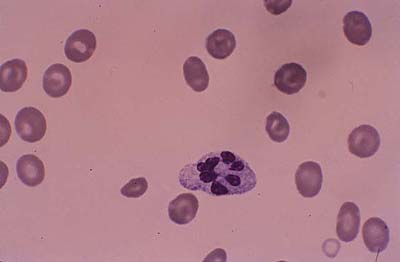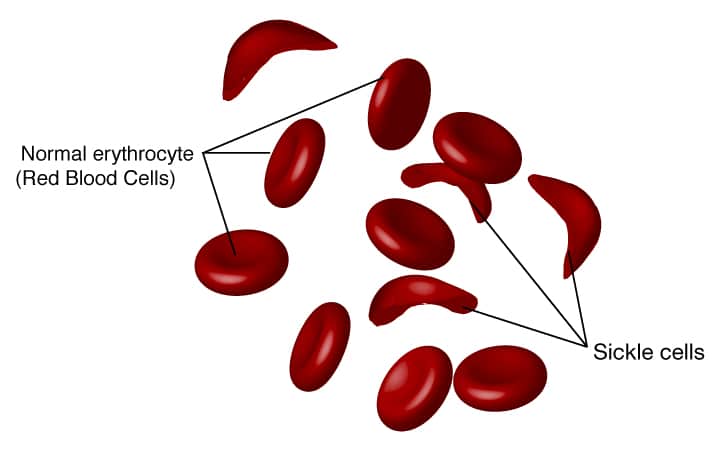“Anemia is “an”+”aemia” (no+blood) which is a condition with “decreased oxygen-carrying capacity of the blood.”
Red blood cells carry oxygen to different parts of the body.
They have an iron pigment, namely hemoglobin, to do that.
Anemia can occur either due to a
- Decreased RBC count
- Decreased hemoglobin, or
- Decreased blood volume.
Any of these factors can lead to insufficient oxygen-carrying capacity by the blood to the tissues and cells by the blood.
Red blood cells (RBCs) per deciliter of blood are kept constant to aid proper respiration.
When the RBC count per mm of blood falls, we experience anemia.
This anemia is mostly found in women and children. The rate of incidence is as follows.
- Pregnant women (38%)
- Children below two years of age (14%)
- Elderly people above 65 years (10%)
- Women aged between 12 to 49 years (9%)
But of them, anemia is mostly seen in women with abnormal menstruation, during pregnancy, and in children with poor nutrition.
Clinically, anemia is of the following types as
- Normocytic anemia
- megaloblastic anemia
- microcytic anemia
When blood is examined under a microscope, there are three types of anemia like
Normocytic anemia
- As the name indicates, the patient has Red blood cells of normal size and sufficient hemoglobin.
- But, the problem is there is a decrease in erythrocyte count rather than the changes in RBC.
- In many cases, this is caused due to blood loss in injury, menstruation, etc.
- However, it can also be caused by a deficiency of erythropoietin, where there is less synthesis of red blood cells in the bone marrow.
Megaloblastic anemia
- In this type, the red blood cells are enormous.
- This occurs as the cells are released into the blood before they fully mature.
- They are formed with incomplete cell division in the bone marrow, leading to a larger size than normal.
- They can have sufficient hemoglobin or less.
Microcytic anemia
- In this type, the RBC cells are smaller in size than the normal ones.
- This is mostly due to insufficient hemoglobin levels.
- The oxygen-carrying capacity of the blood depends on the hemoglobin portion situated inside red blood cells (RBCs).
- So, if there is anemia, we experience weakness and lack of strength.
- These RBCs are formed in the red bone marrow of the large bones in the body.
- They have a life span of 120 days. They become fragile due to wear and tear during circulation and get destroyed in the liver and spleen.
- The new RBCs replace the dead ones.
- The cells formed in the bone marrow are relatively larger than normal RBCs, and hence, vitamins like folic acid and vitamin B12 help in their multiplication to regular RBCs.
Types of Anemia Scientifically
1. Aplastic anemia
As the name details, it is “A”+ “plasia” = No Tissue)
- This is a condition that damages the red bone marrow of long bones.
- As we know, the red bone marrow is the site of the formation of blood cells (erythropoiesis).
- However, due to the effect of radiation or drugs, this bone marrow gets damaged.
- Hence, there is an inability to produce enough RBCs for sufficient oxygenation.
- In severe cases, it may require bone marrow transplantation.
2. Megaloblastic Anemia
- As the name indicates, the cells formed are very large.

- This is due to the lack of either vitamin B12 or folic acid, leading to mega RBCs.
- This again happens due to improper multiplication of large cells formed in the bone marrow.
- Hence, the RBC count is low due to improper cell multiplication and production.
- Further, due to their large size, they easily get destroyed, and hence, their life span is small, unlike normal RBCs’ 120 days.
- Thus, the overall RBC count falls due to a lack of the above vitamins.
- This is otherwise called pernicious anemia if Vitamin B12 is deficient.
- So, it is advised to take vitamin supplements after consulting a physician.
3. Genetic or hereditary anemia
- This condition is less common, but the patient suffers for their entire life.
- This condition can be termed hemolytic anemia (hemo-related to RBC and Lytic- means breakage).
- RBC cells flowing in the blood are broken down before the normal life span of 120 days.
- This destruction in a short time leads to decreased RBC count.
- The damage is due to their weak or fragile and abnormal structure instead of normal biconcave. Examples include

a. Sickle cell anemia.
- As the name indicates, the RBCs formed are sickle-shaped instead of biconcave.
- Due to abnormal shape, they are easily susceptible to endoplasmic reticulum destruction in the liver and spleen.
- Thus, their life span is small and less than the usual RBCs of 120 days.
- They get destroyed and have a short life span, so the RBC count remains low, leading to anemia.
b. Spherocytosis anemia
Here, the cells are spherically shaped instead of biconcave, and they get destroyed faster.
Similar to sickle cell anemia, they have short life spans.
6. Decreased Hemoglobin content
- Here, the RBC cells are devoid of sufficient hemoglobin.
- This can be due to dietary protein insufficiency or decreased iron content.
Ex: Hypochromic or microcytic anemia+ hypo+chromic=less colored and microcytic= small cell size.
- As we see, this is anemia due to low iron levels in the body.
- There are moderate amounts of hemoglobin due to iron deficiency, such that cells are small and blood looks pale.
7. Hemorrhagic Anemia
- This happens when blood loss occurs due to an accident, during delivery, etc.
- Here, total blood volume, including RBC numbers, is low.
- This is seen in women in most cases as they lose blood even due to the menstrual cycle.
- This blood loss anemia can be rectified by transfusion.
8. Anemia due to less RBC count
- This is a type of anemia where there is a lack of a sufficient number of red blood cells.
- This is due to a lack of production of RBC or excess destruction of RBC.
- This type of anemia includes aplastic anemia, megaloblastic, and pernicious anemia.
- Other types include genetic-related anemic conditions like sickle anemia, hereditary spherocytosis, erythroblastosis fetalis, etc.
- For immediate rescue, RBC cells are transfused to the patient.
- However, in the long run, the effort is to enhance the formation of a new RBC.
The causes of anemia are
a) Iron deficiency
b) Vitamin B12 Deficiency
c) Vitamin B9 (folate) deficiency
d) A decrease in blood cell formation
e) Blood loss due to hemorrhage.
f) Hypothyroidism (as thyroid hormones affect erythropoiesis)
g) Excessive and premature destruction of red blood cells.
- So, anemia can occur with less blood volume (in cases like severe bleeding).
- Due to malnutrition, a decrease in RBC count can occur due to a decreased supply of Vitamins B12 and B9.
- Decreased hemoglobin content can occur due to a lack of iron supplements in food.
Symptoms of anemia include:
Most symptoms go unnoticed, but sometimes there can be
1. Fatigue: Exhaustion due to physical exertion as blood cannot supply needed oxygen for chemical energy production.
2. Headache: This could be due to insufficient oxygen supply to the brain.
2. Paleness of mucous membranes like that below the eyelids, etc.
3. In extreme conditions during exercise, the heart raises the cardiac output (volume of blood pumped) to meet the excess oxygen demands of the body.
In doing so, there can be chances of cardiac failure and death.
One can avoid anemia through a proper diet, leafy vegetable consumption, and iron supplements.
If one has a vitamin deficiency, it has to be corrected immediately.
Sometimes, though vitamin B12 is consumed from external supplements, the gut may not be able to absorb it.
So, it is advised to consult a physician if the symptoms are troublesome.
Frequently asked questions and answers
Can urgent care treat anemia?
Urgent care can temporarily treat anemia by blood transfusion or giving plasma expanders.
Does alcohol cause anemia?
Alcohol complications like ulceration of the gut and damage to the liver and other organs can cause anemia.
Great comments! Very informative. I was trying to determine the type of anemia as a result of the Camp Lejeune NC Toxic water contamination. I was diagnosed with anemia as a result of being stationed there during my military service.
Thanks for stopping by. The Camp Lejeune NC water contamination could be due to industrial solvents trichloroethylene (TCE) and perchloroethylene. These two solvents are found to cause aplastic anemia by inhibiting the Erythropoiesis mechanism.
Camp Lejeune: Past Water Contamination
Tetrachloroethylene: effect
Health effects linked with trichloroethylene
Great article!
Any chance you would do a follow up article regarding B12 or folate deficiency anemia?
Approximately 40% of the population has the MTHFR gene mutation and cannot properly utilize certain forms of the synthetic supplements which can actually make the problem worse. Methyl forms are needed.
And a select few with a double mutation actually can’t even properly utilize the methyl forms.
I suspect this is going to be a growing problem in society as we have been exposed to foods fortified with cheap synthetic vitamins that have had a compounding negative on our bodies that most of us have been completely unaware of.
Most people don’t even know they have this gene mutation.
Cheers!
Hi thanks for your inputs on the anemia related to food fortified with cheap vitamins. Will update the article accordingly.
This was VERY helpful for me. The type of my anemia is still being diagnosed, but I feel much more prepared for whatever happens. On another topic, I’m OCD and very literal so I was confused on two occasions while reading this, due to typographical errors. If you would like to correct them, the first one was in the last sentence on Microcytic Anemia where the word ‘large’ was used but it should have been ‘larger’. The second error was the second bullet on Megaloblastic Anemia as the Vitamin referred to was listed as ‘Vitamin -12’, when I believe it was supposed to be ‘Vitamin B-12’.
Hi Natalie! Thanks for stopping by; the corrections are incorporated as per your advice.
We have included one more cause i.e. hypothyroidism too.
Have a great day. 🙂
very good explanation
Many thanks for your time and effort in simplifying the different forms of Anemia!!!
It is very helpful. May you write a few summaries of the deficiency of red blood cells and email me, please.
excellent explanation